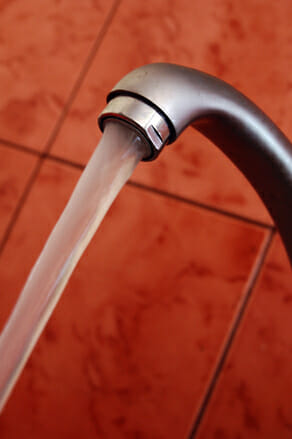Do Not Drink Tap Water Under These Conditions
Generally, tap water is considered to be safe to drink. The regulations mandated by the EPA are in place to ensure that the water supply reaching our homes is safe for consumption. While city water contains fluoride, chlorine, and other chemicals that in the alleged trace amounts pose no serious health risk, this does not mean that your tap water is always safe to drink. There are exceptional circumstances when you should make certain exemptions. Although there may not be a massive amount of evidence in support of avoiding drinking tap water in these circumstances, it is common sense that drinking contaminated tap water is not a good idea. For example, if there is a break in your water line you should not drink your tap water and here are the reasons why.
During a Water Line Break:
Water treatment facilities aim to provide safe drinking water which contains safe contaminant levels. As water travels from the facility to your home, it remains relatively unchanged. Unfortunately, when there is a break in the water line, debris from the surrounding area and the broken pipe can flow into the water inside the pipe. In most cases, the water department will cut off the flow of water to a broken pipe, but if a break remains unreported for any length of time, it may be delivering unsafe water to your home.
After a Water Line Break:
After the repairs to the water pipe have been completed, this does not mean that the water is free of contamination. The team responsible for the water supply will continue to check for any further leaks or issues, and monitor contamination levels while the pipes are flushed. Until tests have shown that there is no danger of further pipe breaks or potential contamination, you should avoid drinking tap water.
Potential Contaminants From a Water Line Break:
When a water main breaks there is a greater danger than dirt entering your tap water. Your water supply could contain potentially dangerous contaminants, even if the water looks crystal clear. According to the EPA, contaminant issues following a break in the water main include disease causing pathogens, microbial contaminants, E Coli and unsafe chemicals. The CDC also highlights that the risk of Legionella and other forms of gram-negative bacteria increases during a water main break.
Local water agencies have a responsibility to notify the public if steps are needed when using potentially contaminated water. Generally, you will receive a boil water notice, which means that water needs to be heated to a full rolling boil for a minimum of a minute. Unfortunately, there are some types of water contamination that will remain hazardous even if water has been boiled. If the water contains metals or certain chemicals, the water will stay undrinkable, even if it has been boiled. Fortunately, you can protect yourself and your family from potentially contaminated water with a domestic filtration system. Whether you choose a basic filter pitcher or a whole house system, you can eliminate the potentially harmful chemicals and debris which may have contaminated your drinking water, ensuring that it is safe for consumption.
By Giovanni Longo President Flood Brothers Plumbing
Giovanni Longo is a 3rd generation master plumber who has been practicing his craft and trade in the greater Los Angeles area for well over a decade and a half. A plumbing and hydraulics-engineering innovator, Giovanni’s particular world-class expertise focuses on dealing with challenging sewer system designs as well as resolving complex commercial and residential draining issues. As a certified Flood Mitigation expert, he is also well versed in a wide variety of water damage and remediation solutions.





